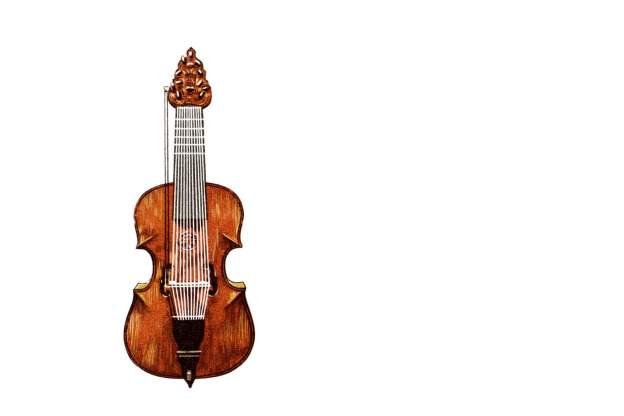
In 2011, Destino Classics released the first of a planned series of CDs, a recording called Lamentarium that comprises, by its own description, “passional, sensual, macabre and erotic narrative from 17th century Rome." The performers are members of the ensemble Atalante, named in honor of the inventor of a musical instrument called the lirone.
The director of Atalante is Erin Headley, known since 1980 as the first and foremost performer on the lirone. The lirone has a unique and magical sound: it is a bowed string instrument, but it is chordal rather than melodic and functions in a continuo section like a chitarrone, organ, or harp. Those who automatically associate continuo playing with a keyboard and possibly a bowed string instrument playing the bass line will find this recording to be a very surprising auditory experience.
The four instruments that I just mentioned – lirone, harp, chitarrone and harpsichord – are the continuo, or accompanying, ensemble for the recording. The only other instruments heard are a consort of viols that contributes instrumental renderings of vocal music, a common practice for instrumentalists that dates back at least to the early 16th century. Listen, for example, to some of Luigi Rossi’e “Peccantum me quotidie.”
What a dissonant piece! Without a good bit of experience with the experimental Roman repertory of the early 17th century, one might be forgiven for the inability to pin the piece down chronologically, possibly even thinking it might be a modern composition for historical instruments.
But most of the music on this CD is vocal, with an enormous variety of color in both the voices and their accompaniment. Listen, for example, to some of the centerpiece of the CD, Rossi’s Tears of Mary Magdalene. You will hear the rich sounds of the arpa doppia, or double harp, and instrument that, despite its name, has three parallel sets of strings. The outer two sets function more or less like the white keys on a piano and the inner set like the black keys, allowing it to play music that shifts tonalities without needing the pedals that became more practical once composers began exploiting all the possible keys of music. You’ll also hear the chitarrone, a large, lute-like instrument, the harpsichord, also a plucked instrument despite its keyboard, and the aforementioned lirone.
The imagery in the poetry vividly paints Mary Magdalene’s grief at the Crucifixion with descriptions of excruciating wounds, rivers of blood, passionate love, anger and hopelessness, and all-embracing grief at the cruel wonder before her.
You just heard a small part of a piece that lasts for nearly twenty minutes. Its accompaniment combines the rich sounds of the arpa doppia, a plucked sound that is very different indeed from that of a harpsichord, with the lirone, harpsichord and chitarrone, enveloping the singer in a rich and luscious blanket of sound.
In reflecting upon these rather exotic sounds, it occurs to me that the arpa doppia, harpsichord and chitarrone are not the sort of instruments one would have wanted to try to transport by horse in the 17th century, nor would one be terribly keen to sling them into baggage on airplanes nowadays. How lucky we to have recordings available so we can at least hear them whenever we want!









